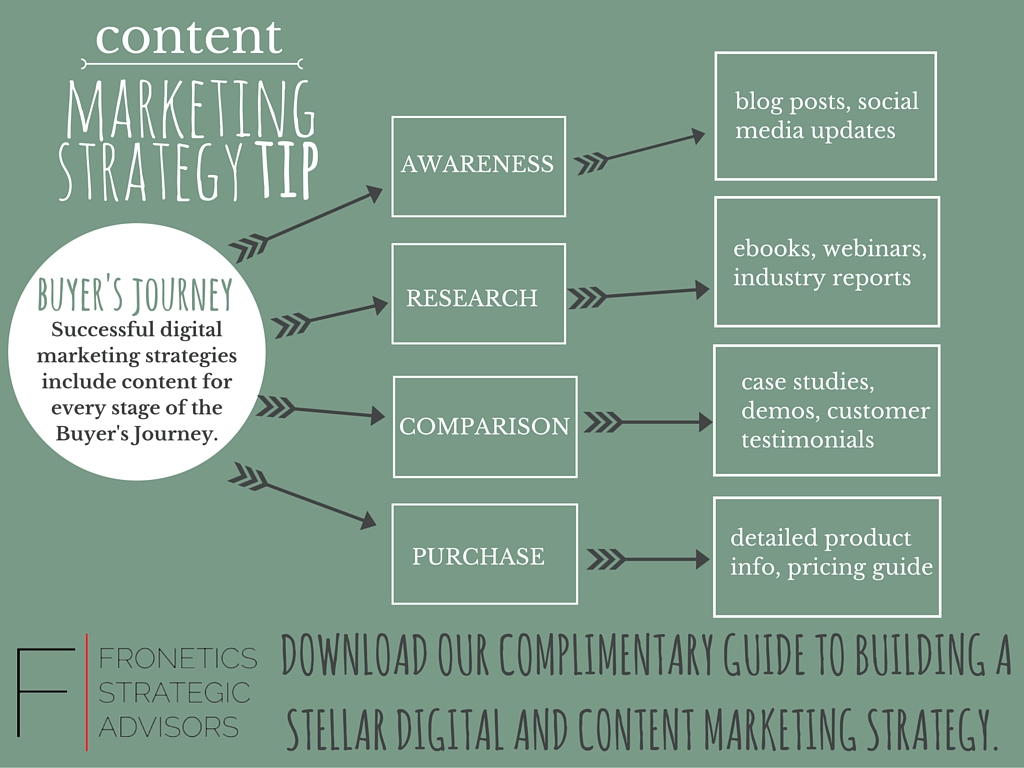
by Fronetics | Nov 2, 2015 | Blog, Marketing, Social Media, Strategy

In mid-October, LinkedIn made some big changes: LinkedIn Groups are private and there’s a new, standalone LinkedIn Groups app for iOS users. Many LinkedIn Groups were used for the purpose of networking, research, and prospecting, however many people were misusing, and even abusing, the Group option. Rather than using groups properly, to form relationships, engage with industries that could supplement yours, and keep up with hot topics, the group option was often used for self-promotion.
The Changes
According to LinkedIn, these changes were spurred by consumer feedback. “Our research has shown that professional conversations are most effective in a private trusted space, so conversations in groups won’t be visible until you’ve joined the group. Joining a LinkedIn group now requires either an invitation or approval of your request. Our data has shown that open groups have historically attracted a larger percentage of low-quality conversations. Members-only groups have created significantly more participation and conversations than others (up to five times more), indicating that members feel more confident contributing in these types of groups.”
Some additional, prominent changes:
- Moderation: Conversations will be posted without the need for approval from a moderator, manager, or group owner, however those people can still remove off-topic conversations.
- Standard and Unlisted Groups: In an effort to simplify things for the consumer, groups will be either unlisted, meaning that they don’t show up in search results and only a manager/moderator can invite people members, or standard, meaning that groups do show up in search results and members can invite anyone with a 1st degree connection.
- Content Filtering: Filtering of spam and low-quality content to keep promotional material out of conversations.
- Subgroups: Subgroups will no longer exist to help clear up confusion. Any current subgroups will become their own, standalone groups.
- Mentions in Conversations: Like other forms of social media, the @ symbol will now be used before a name in order to reference someone and bring them into the conversation.
Other changes can be found at LinkedIn’s Help Center page.
Group Etiquette
If you’re already using groups in smart way, you’ll only see improvement from LinkedIn’s changes. Say goodbye to spam and relentless self-promotion. Groups may become more meaningful with a more exclusive approach. The people who are genuinely interested in having specific, topical conversations will. Here are some tips on how to navigate the new Groups:
-
Engage Don’t Enrage:
Keeping in mind that there’s a difference between narcissism and seeking feedback, wait a bit before you post your own blogs, articles, or other branded content. You may want a group of talented, knowledge people to review your writing, but you need to establish yourself as a valued member of the group first. Comment on and like others’ posts. Put in your time and build rapport.
-
Prudence in Posting:
When there’s a discussing going about a topic that speaks to you, you might feel anxious to jump in with a relevant article you’ve written, but consider your timing. Only after posting third-party articles and blogs, to show your support of others and breadth of knowledge, consider posting your own. When you do post your first article, it might be helpful to connect it to the groups’ influence. For example, Based on the recent, rich conversation about the engagement of Boomers and Millennials in the workplace, I gather my recent years of experience with this and wrote an article I though I’d share with you. I appreciate the fruitful conversations here that helped spur this article.
-
Connect Cautiously:
As with all etiquette, the idea isn’t to approach people with fear, but with respect. Sometimes, early on, respect can be established by being cautious in order to better understand individual and community needs and norms. Once you’re in a group, don’t be unknowingly creepy. Engage with people who might have similar interests or who you feel might be attracted to your brand. First comment on their posts, like an article, show that you’re engaged and have something to offer intellectually. Give them your thoughts before your products. Once some sort of engagement is established, then send a connection request.
The new changes to LinkedIn’s Group option is going to serve everyone well, whether you’re in marketing in or any other field. It means more meaningful engagement and less bothersome noise and chatter.
Fronetics Strategic Advisors is a leading management consulting firm. Our firm works with companies to identify and execute strategies for growth and value creation.
Whether it is a wholesale food distributor seeking guidance on how to define and execute corporate strategy; a telematics firm needing high quality content on a consistent basis; a real estate firm looking for a marketing partner; or a supply chain firm in need of interim management, our clients rely on Fronetics to help them navigate through critical junctures, meet their toughest challenges, and take advantage of opportunities. We deliver high-impact results.
We advise and work with companies on their most critical issues and opportunities: strategy, marketing, organization, talent acquisition, performance management, and M&A support.
![How to create an effective content strategy [Template]](https://www.fronetics.com/wp-content/uploads/2024/10/content-strategy-1024x675.jpg)
by Fronetics | Oct 26, 2015 | Blog, Content Marketing, Marketing, Strategy
With 3 out of 4 marketers across the globe prioritizing content marketing, producing unique content to attract and convert website visitors can be tough. From social media to blog posts to ebooks and webinars, buyers are accessing your content through a myriad of channels. The amount and frequency of content to create can be dizzying. Fortunately, by starting with a solid strategy you can assure your content flows freely and your marketing content stands out.
One key element of any successful content strategy is mapping your buyer’s journey. Considering the path of purchase of current customers can give you valuable insight into the stages that a lead goes through before becoming a customer. Typically, buyers follow a track that looks something like this: awareness, research, consideration, and purchase. Knowing your buyer’s journey can inform your decisions about what kinds of content will resonate with your prospects and which channels of distribution will be most successful connecting them to your content.

Of course, just mapping out your Buyer’s Journey won’t lead to content marketing success. It’s certainly important, but it should be one component in your overall strategy. Start building a comprehensive content strategy that includes goal setting, developing buyer personas, setting keywords, and brainstorming content topics by using our free Content Strategy Template. You’ll be well on your way to creating great content and attracting even better leads.

You may also like:
Fronetics Strategic Advisors is a leading management consulting firm. Our firm works with companies to identify and execute strategies for growth and value creation.
We advise and work with companies on their most critical issues and opportunities: strategy, marketing, organization, talent acquisition, performance management, and M&A support.

by Fronetics | Oct 21, 2015 | Blog, Content Marketing, Marketing, Strategy, Talent

If you watch enough romantic comedies, you’ll start to recognize a pattern. It goes something like this: Boy meets girl. Girl meets boy. Movie follows antics of girl + boy, winding its way through the (oftentimes hairy) narrative. Throughout the movie we see the main characters discover what’s attractive, appealing, or annoying about the other. Eventually, these main characters end up together at the end – well versed in one another’s attributes, nuances, and idiosyncrasies.
If you think about it, the storyline of our main characters’ isn’t that different from the parallel storyline that could be drawn about lead nurturing activity in B2B marketing. When you first meet your lead, chances are they won’t be ready to purchase right away (a Marketo benchmark survey says that half aren’t). But if you spend time establishing a relationship and building trust, the moment your lead is ready to purchase, you’ll be miles ahead of your competition.
As more and more buyers are engaging with brands before they are ready to purchase, an essential function of any marketing department is lead nurturing. That is, moving leads through the sales funnel by leveraging what’s known about their needs and online behavior. Congruently, marketing software company Marketo describes lead nurturing as being “personalized, adaptive, and able to listen and react to buyer behavior in real-time.” Using a true multi-channel approach allows us to accomplish this. In a recent publication, Marketo endorsed the use of this multi-channel strategy:
“A typical buyer moves quickly from email, to social media, to your website and then back to social media, in the blink of an eye. Marketers need to prepare their lead nurturing strategy for multi-channel engagement. Buyers need to see an integrated experience across every single channel.”
Considering the multi-channel digital activity of buyers, building a multi-channel lead nurturing strategy is essential for companies that are looking to create an optimal end-user experience. Here are four tools that will help you deliver a series of targeted messages across multiple touch points and platforms to help move your leads through the buyer’s journey.
Email
Presuming that your B2B leads are derived online, email seems like a natural channel to use to connect with and nurture your leads. And it is. Create opportunities to educate your leads by sending them targeted emails that contain informational content. You’ll have to take it further than that though, or your emails will come across as spammy and annoying. Build trust with your leads by reminding them they’ve met you before – use personalization tokens (contact name, job title, etc.) within your emails. Similarly, don’t just blast the same email to your entire contact database; take the time to segment your leads based on where they stand in the buyer’s journey. A lead nurturing email you send to a lead that has only downloaded a top-level white paper should look vastly different than the email you send to a lead that has downloaded a case study, a product brochure, and a pricing guide. Above all though, make certain that the content you’re sending is valuable, relevant, and of excellent quality.
Phone
“No other interaction is more influential in the path to purchase than a phone call.” – Invoca Call Intelligence Survey
Call intelligence company Invoca has strong feelings for the telephone – and for good reason. Their analysis of 32 million phone calls found that phone calls made after parties had first engaged online had an average conversion rate between 30% and 50%. Sure, a rejection by email is less painful, but when the conversion rates are that high, you can’t afford not to pick up the phone. There are some ways to make it easier, though. Start by promoting your phone number. It sounds simple, but for those of us who work largely in the digital world, it can be easy to forget. Display your phone number in your company’s website header and throughout your site’s landing pages and blogs posts. Ensure simplicity for mobile users by making your phone number clickable on your mobile site.
Social Media
It’s not enough these days to simply post and pray, particularly on social media networks. Social media lead nurturing includes monitoring, listening, and engaging. Give your leads some love. Look for opportunities to favorite, like, or retweet the content of your leads. Monitor LinkedIn, Twitter, and Facebook for mentions of your company, similar products, or industry and then respond with activated content using both social media and a longer form of correspondence, like email. Finally, don’t discount lead nurturing activities that use paid social media ads. These ads can be particularly successful when you are nurturing leads based on specific attributes such as geographic location or company size.
Dynamic Website Content
Displaying personalized web content for visitors helps to keep leads moving forward in their buyer’s journey. Let’s say you’d gotten a great email response from a lead when you shared your product brochure earlier in the week. Displaying complementary web content, like a pricing guide, to your lead the next time he’s on your website assures alignment between your content and your lead’s proximity to purchasing. You can also use dynamic web content to target various verticals, organizations, or buyer personas.
Multi-channel lead nurturing is really about using all the tools at your disposal to meaningfully connect with your leads in order to build trust and establish credibility as you guide them on their journey to becoming a customer. Building a winning strategy does require attention to detail as there are many moving parts, but at the end of the day, if your messaging is credible and consistent it becomes less about channel and more about content. And ultimately, high-converting lead nurturing campaigns are only as good as the content they’re built around.

by Fronetics | Oct 15, 2015 | Blog, Consumer Electronics, Logistics, Marketing, Social Media, Strategy, Supply Chain

Consumers are using social media to help them make purchase decisions. An infographic by Invesp provides key details including that:
- 4 in 10 social media users have purchased an item online or in-store after sharing it or marking it as a favorite on Twitter, Facebook or Pinterest.
- 50% of those purchases take place within a week; 80% take place within 3 weeks.
- 71% of consumers are more likely to make a purchase based on social media referrals.
- Twitter is the most influential for tech purchases, and the least influential for gardening and decor.
- The top 2 ways Twitter helps solidify purchase decisions are: purchase location identification and product discovery.
A Consumer Electronics Association (CEA) study found similar results. CEA found that 24 percent of consumers who use social media say that they always or almost always refer to social media websites before they make a consumer electronics purchase. For high engagement users (13.5 or more hours per week) this increases to 65 percent.
Here’s how companies can use this information to reduce returns.
Inform
Use social media to give consumers the basic facts about your company and your product.
Educate
Use social media to educate consumers about your product. Specifically, social media can be used to educate the consumer about how the product can be used, the benefits that can be realized by the use of the product, and the ROI of the product.
Engage
Use social media to engage with consumers.
If a consumer is considering the product, use social media to answer questions the consumer has, or to address concerns. Similarly, if the customer has already purchased your product, you can use social media to answer questions the consumer has, or to address concerns.
Through the use of social media you can enable consumers to make more informed purchase decisions. Additionally, you can use social media to answer questions and better educate consumers on how to use your product thereby reduce no fault found returns.
This was originally published on Electronics Purchasing Strategies.

by Fronetics | Oct 14, 2015 | Blog, Marketing, Social Media, Strategy, Supply Chain

A study conducted by Accenture found that supply chain risk management is seen by companies as a priority. Seventy-six percent of companies who participated in the survey described supply chain risk management as important or very important, and 25 percent of respondents reported that they are planning to make increased investments of at least 20 percent in supply chain risk management in the next two years.
Social media is one place where an investment should be made.
Social media is not just for kids. Social media is not just for socializing. Social media is a business tool that can play an important role in supply chain risk management. Here are three reasons why your company should invest in social media.
News in real time
Social media is the new “newswire.” It has supplanted the AP, Dow Jones, and Bloomberg for breaking news. The earthquake in China, the Boston Marathon bombing, the death of Obama bin Laden, and the engagement of Prince William to Kate Middleton were all stories that broke on Twitter. Stories that played out over social media include the horsemeat scandal and Apple’s China supply chain sage.
When it comes to supply chain risk management, knowing what is happening in real time is vital. Whether it is learning about an earthquake that happened near your manufacturing facility, or monitoring the path and intensity of a hurricane – real time information will enable your company to make more informed and timelier decisions on how to manage or mitigate risk.
Identify emerging risks
In addition to providing timely information on events such as natural disasters and terror attacks, social media is a tool that can be used to identify additional risks to your company and supply chain. Specifically, social media can be used to identify risks such as weak links in your supply chain, missteps made by a supply chain partner, and customer concerns/dissatisfaction.
Managing and mitigate risks
A survey found that 89 percent of consumers began doing business with a competitor following a poor customer experience. The survey also found that 50 percent of consumers give a brand only one week to respond to a question before they stop doing business with them.
Social media is a great tool to provide customers with a great customer experience – fast. By engaging a dissatisfied customer over social media, listening to their concerns and addressing them – you are more likely to retain that customer and gain more customers. As the adage goes: “It is less expensive to retain a current customer than attain a new customer.”
Additionally, because social media allows for information to be distributed to a large number of people instantaneously, it is an effective tool for letting customers and partners know you are on top of an issue, or for altering them of an upcoming disruption.
When it comes to supply chain risk management communication and information is vital – social media is an effective tool to add to your company’s risk management toolkit. Get your company off the social media starting line.
This was previously published on Electronics Purchasing Strategies.

by Fronetics | Oct 13, 2015 | Blog, Content Marketing, Marketing, Strategy

Imagine for a moment you’re entering an electronics retailer, ready to purchase a new television. You’ve been thinking about buying a new TV for a while, so you’ve done your homework. You know the difference between LCD and plasma. You’re certain that a 50 inch flat screen would look stellar hanging on the wall in your living room. Today’s the day. As you approach the salesman and begin to tell him the specifics of what you are looking to purchase, he looks at you and says, “Thanks for contacting me. I’ll be in touch within 24 to 48 hours.” It sounds silly, right? But that’s essentially what your company is telling prospects when it fails to respond quickly to online leads.
So how is “quickly” defined? Harvard Business Review (HBR) set out to measure how long on average it took for companies to respond to a web-generated lead. Auditing more than 2,200 businesses, they found an average first response time of 42 hours for businesses that responded to a lead within 30 days. Surprisingly, 23% of companies never responded. 
42 hours sure sounds like a long response time, but is it really? Turns out, it’s worse than you might think.
After reviewing the results of the HBR study, a research team at InsideSales.com examined three years of data across six companies that generate and response to web leads, from over fifteen thousand leads and over one hundred thousand call attempts. They focused on one question for this study: When should companies call web-generated leads for optimal contact and qualification ratios? Of this study a researcher wrote:
“…the odds of making a successful contact with a lead are 100 times greater when a contact attempt occurs within 5 minutes, compared to 30 minutes after the lead was submitted. Similarly, the odds of the lead entering the sales process, or becoming qualified, are 21 times greater when contacted within 5 minutes versus 30 minutes after the lead was submitted.”
Essentially, sales teams aren’t only missing opportunities to contact leads when they wait to respond, they’re also missing opportunities to qualify leads.

So where does the organizational problem lie? It could be that your sales team is hyper-focused on their own sales leads, ignoring signs from online leads that they’re nearing closer to purchase. It’s also possible there’s inherit incongruence in the distribution of online leads to members of your sales team. Could you improve response time if leads were distributed differently? Also culpable could be the frequency with which your sales team checks for new leads. Is your CRM pushing sales lead notifications to your sales team only once per day? Pushing out immediate notifications could positively affect your lead response time. Whatever the reason you identify, it’s important to address and rectify these issues as soon as possible.
With a white paper authored by Google and the Corporate Executive Board reporting that today’s B2B customers are nearly 60% through the sales process before engaging a sales rep, it is unsurprising that a reported 35% to 50% of sales go to the vendor that responds first. Is your sales team’s average response time faster than your competition?


![How to create an effective content strategy [Template]](https://www.fronetics.com/wp-content/uploads/2024/10/content-strategy-1024x675.jpg)







